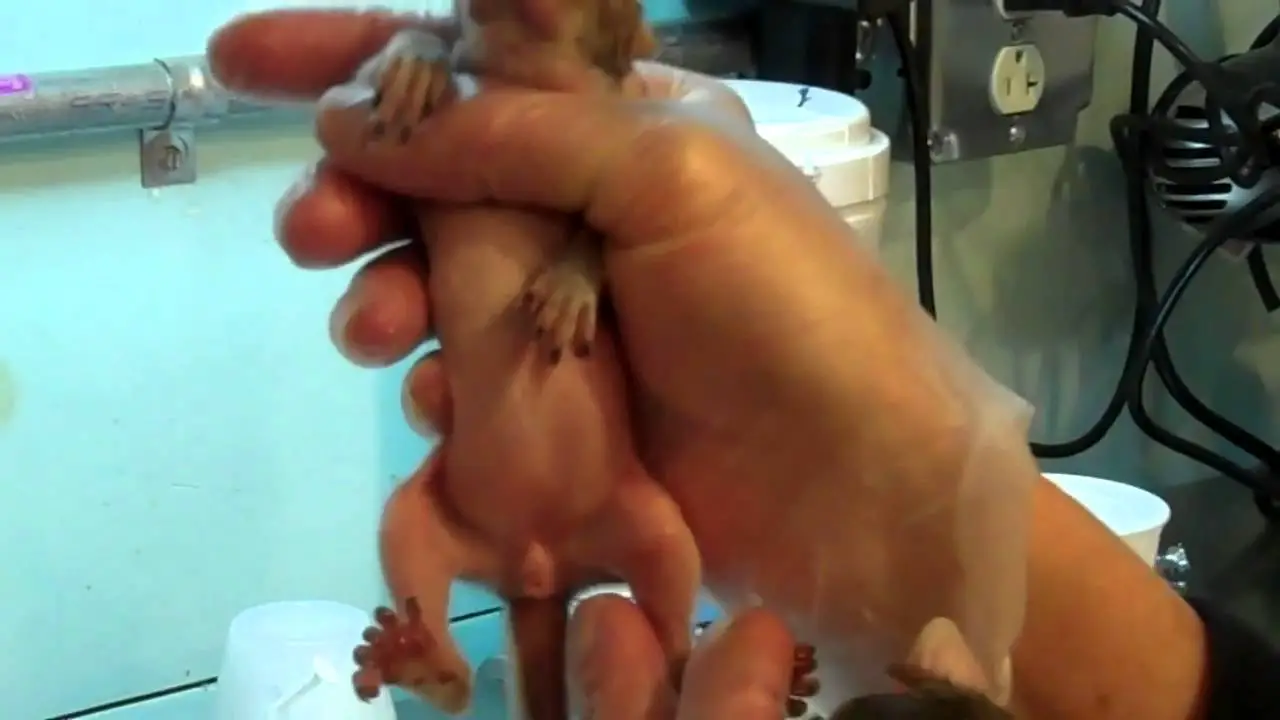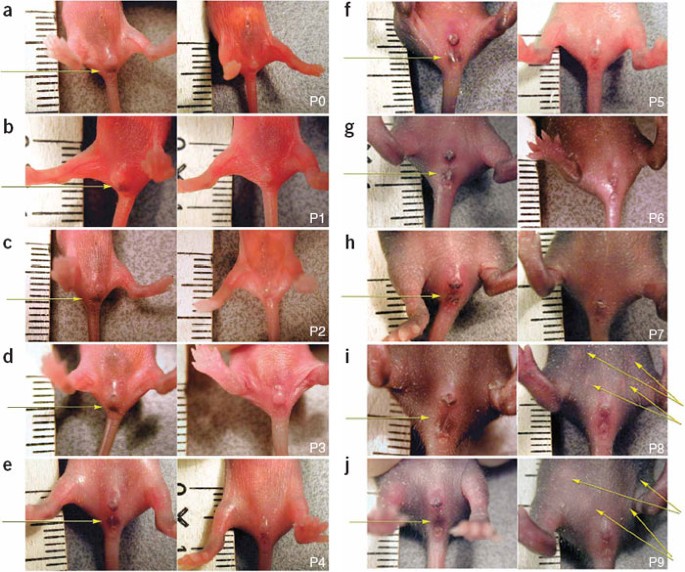
To determine if a baby squirrel is male or female, examine the genital area. Males have a larger gap between the anus and genital opening.
Identifying the gender of a baby squirrel can be crucial for wildlife rehabilitators and pet owners. Understanding the differences between male and female squirrels helps in providing appropriate care and managing their habitat. Observing the genital area is the primary method to distinguish the gender.
Males display a noticeable separation between the anus and the genital opening, while females have these openings closer together. This knowledge can aid in proper identification and ensure that the baby squirrel receives the necessary attention and care tailored to its specific needs. Proper identification is vital for their health and well-being.
Physical Characteristics
Identifying the gender of a baby squirrel can be tricky. Understanding their physical characteristics helps. This section explores the key differences.
Genital Differences
Baby squirrels have distinct genital differences. Male squirrels have a bulge near their tail. This bulge is their scrotum. Female squirrels lack this bulge. Instead, they have a small opening close to the anus. Inspect these areas to determine the gender.
Size And Weight
Male and female baby squirrels can differ in size and weight. Males are often slightly larger. They may also weigh more. A small scale can help with weight comparison.
| Characteristic | Male | Female |
|---|---|---|
| Scrotum Bulge | Present | Absent |
| Size | Usually larger | Usually smaller |
| Weight | Heavier | Lighter |
Observing these characteristics makes it easier to identify a baby squirrel’s gender.
Behavioral Traits
Understanding the behavioral traits of baby squirrels can help you identify their gender. Observing how they act in different situations provides clues.
Activity Levels
Male and female baby squirrels show different activity levels. Males tend to be more active. They explore their surroundings more often. Females are usually calmer. They spend more time grooming and resting. These differences become more noticeable as they grow older.
Social Interactions
Social interactions also vary between genders. Male baby squirrels are more playful. They engage in mock fights and chase each other. Females are more nurturing. They often cuddle with their siblings. Observing these behaviors can help you determine their gender.
| Behavior | Male Squirrels | Female Squirrels |
|---|---|---|
| Activity Levels | More active, explores often | Calmer, grooms and rests more |
| Social Interactions | Playful, engages in mock fights | Nurturing, cuddles with siblings |
Expert Techniques
Determining the gender of a baby squirrel can be tricky. Expert techniques help in identifying whether it’s a male or female. These techniques ensure the process is safe and accurate. We’ll cover visual inspection and handling methods to distinguish the gender effectively.
Visual Inspection
Visual inspection is the first step in identifying a baby squirrel’s gender. Look closely at the genital area.
- Males have a distinct gap between the anus and the penis.
- Females have the anus and vulva very close together.
Use a magnifying glass if the features are hard to see. Ensure the squirrel is calm during the inspection.
Handling Methods
Handling methods require gentle care to avoid stress. Follow these steps:
- Wear gloves to protect yourself and the squirrel.
- Hold the squirrel gently but firmly.
- Lift the tail to expose the genital area.
Check for the presence of testicles in males. In females, look for the absence of testicles and the proximity of the anus and vulva.
These expert techniques ensure you can tell if a baby squirrel is male or female without causing harm or stress to the animal.

Credit: www.reddit.com
Seasonal Variations
Understanding the seasonal variations in the behavior of baby squirrels can help determine their gender. These changes are influenced by the breeding season and nesting habits.
Breeding Season Indicators
During the breeding season, male and female squirrels exhibit distinct behaviors. Noticing these can aid in gender identification.
- Male squirrels are more active and visible.
- Females tend to be less visible as they prepare nests.
- Males may chase females during this period.
| Behavior | Male | Female |
|---|---|---|
| Activity Level | High | Low |
| Nesting | Minimal | Active |
Nesting Habits
Observing the nesting habits of baby squirrels can provide gender clues. Female squirrels are often more involved in nest building and maintenance.
- Females build larger, more elaborate nests.
- Males might assist but are less involved.
During the nesting period, you may find:
- Females gathering nesting materials like leaves and twigs.
- Males often roaming and foraging for food.
By understanding these seasonal behaviors, you can better identify the gender of baby squirrels.
Common Myths
Identifying the gender of a baby squirrel can be tricky. Many people believe in various myths which can lead to confusion.
Misconceptions About Size
One common myth is that male squirrels are always larger than females. Size alone is not a reliable indicator of gender. Baby squirrels can vary in size due to their diet and health.
Both male and female baby squirrels can appear identical in size. Size differences become more noticeable in adult squirrels. Even then, it’s not a foolproof method.
False Indicators
Another myth is that tail shape can determine gender. Some believe that males have bushier tails. This is not true. Tail bushiness depends on the squirrel’s genetics and health.
Some also think that behavior can indicate gender. For instance, males are thought to be more aggressive. Behavioral traits are not reliable indicators. Both genders can exhibit similar behaviors.
| Myth | Reality |
|---|---|
| Size difference | Size is not a reliable indicator |
| Tail shape | Both genders can have similar tails |
| Behavioral traits | Behavior is not a gender indicator |
- Size is not a reliable indicator.
- Tail shape is not gender-specific.
- Behavioral traits are not gender-specific.

Credit: www.wikihow.com
Practical Tips
Identifying the gender of a baby squirrel can be tricky. This section provides practical tips to help you determine if a baby squirrel is male or female.
Tools And Equipment
To identify the gender of a baby squirrel, you will need a few tools:
- Gloves: To protect your hands and avoid transferring scents.
- Magnifying glass: To see small details clearly.
- Soft cloth: To gently hold the squirrel.
Using these tools will make the process easier and safer for both you and the squirrel.
Safety Precautions
Safety is crucial when handling baby squirrels. Follow these precautions:
- Wear gloves to avoid bites and scratches.
- Be gentle to prevent injury to the squirrel.
- Ensure the squirrel is calm before examining it.
These precautions will help ensure a safe and stress-free experience for both parties.
| Tool | Purpose |
|---|---|
| Gloves | Protect hands and avoid scent transfer |
| Magnifying glass | See small details clearly |
| Soft cloth | Hold the squirrel gently |
By using the right tools and following these safety precautions, you can identify the gender of a baby squirrel effectively.

Credit: www.nature.com
Frequently Asked Questions
How To Identify A Baby Squirrel’s Gender?
To identify a baby squirrel’s gender, look at the genital area. Males have a visible scrotum, while females have a genital opening closer to the anus.
What Are The Physical Differences In Baby Squirrels?
Male baby squirrels have a noticeable bulge near their genital area. Female baby squirrels lack this bulge and have a genital opening near the anus.
When Can You Tell A Baby Squirrel’s Gender?
You can tell a baby squirrel’s gender when they are about 3 to 4 weeks old. At this age, the genitalia are more distinguishable.
Do Male And Female Baby Squirrels Behave Differently?
Behavioral differences between male and female baby squirrels are minimal. Both genders exhibit similar playful and curious behaviors at a young age.
Conclusion
Determining a baby squirrel’s gender involves careful observation. Look for physical differences and behavioral traits. Knowing these can help in proper care. Understanding gender helps in ensuring their health and well-being. Always handle baby squirrels gently and consult experts if unsure.
This knowledge enriches your wildlife experience.
Learn More About Grilling
If you want to learn more about grilling, check out these other helpful resources!






